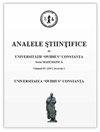阿基米德定理在抛物线段面积上的推广
IF 0.8
4区 数学
Q2 MATHEMATICS
Analele Stiintifice Ale Universitatii Ovidius Constanta-Seria Matematica
Pub Date : 2021-06-01
DOI:10.2478/auom-2021-0026
引用次数: 0
摘要
阿基米德关于抛物线段面积的著名定理指出,抛物线段面积是某内切三角形面积的4/3。本文将该定理推广到n≥3的n维欧几里德空间。由(n−1)维超抛物面和(n−1)维超平面构成的n维立体的体积与某圆锥体的体积之比(我们类似地重复阿基米德的过程)只取决于欧几里得空间的维数,它等于2n/(n +1)。本文章由计算机程序翻译,如有差异,请以英文原文为准。
A Generalization of Archimedes’ Theorem on the Area of a Parabolic Segment
Abstract Archimedes’ well known theorem on the area of a parabolic segment says that this area is 4/3 of the area of a certain inscribed triangle. In this paper we generalize this theorem to the n-dimensional euclidean space, n ≥ 3. It appears that the ratio of the volume of an n-dimensional solid bounded by an (n − 1)-dimensional hyper-paraboloid and an (n − 1)-dimensional hyperplane and the volume of a certain inscribed cone (we analogously repeat Archimedes’ procedure) depends only on the dimension of the euclidean space and it equals to 2n/(n +1).
求助全文
通过发布文献求助,成功后即可免费获取论文全文。
去求助
来源期刊

Analele Stiintifice Ale Universitatii Ovidius Constanta-Seria Matematica
MATHEMATICS, APPLIED-MATHEMATICS
CiteScore
1.30
自引率
0.00%
发文量
15
审稿时长
6-12 weeks
期刊介绍:
This journal is founded by Mirela Stefanescu and Silviu Sburlan in 1993 and is devoted to pure and applied mathematics. Published by Faculty of Mathematics and Computer Science, Ovidius University, Constanta, Romania.
 求助内容:
求助内容: 应助结果提醒方式:
应助结果提醒方式:


